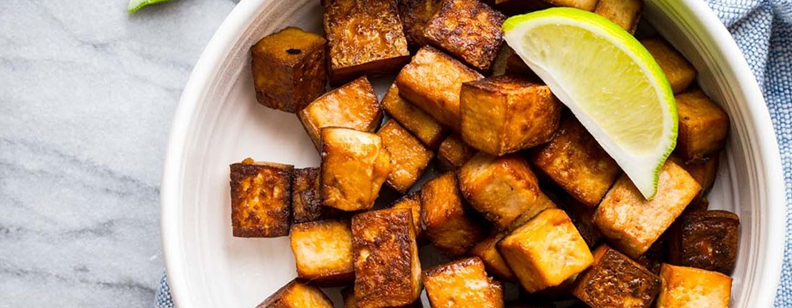豆腐除了吃还能做什么呢?估计你肯定想不到,它还能启发科学家找到全新的制造太阳能电池的新材料。据国外媒体报道,英国利物浦的科学家们最近找到了一种全新的制造太阳能的新材料,这种材料平时用于制作豆腐和浴盐,可以大幅降低现在太阳能电池的制造成本。
What the tofu can be used for except as food? The answer will certainly beyond your expectations: it can enlighten scientists to discover a new material for making solar cells. Reported by overseas media, scientists from Liverpool (UK) recently found a new material, which is usually used to produce tofu and bath salt, to manufacture solar cells, dramatically reducing the current manufacturing cost of solar cell.
目前最常用的方式是通过大而厚的硅板将太阳能转化成电能,硅板的成本会很高。还有少量薄膜太阳能电池是用碲化镉制成的,虽然材料便宜,但是在制造过程中需要添加一种有毒的化学物氯化镉,所以这种方法不太安全,而且还必须花费大量人力财力处理清洗氯化镉的水,防止污染应用水。
The most common way at present is to convert the solar energy to electricity with large and thick silicon panels which are costly. Although a few thin-film solar cells are made with CdTe, a relatively cheap material, cadmium chloride, a toxic chemical, needs to be added in production; therefore this method is not safe and water used to clean cadmium chloride must be treated with a large quantity of efforts and money to prevent water pollution.
这次利物浦的专家们找到了一种既廉价又安全的方法,主要原理就是在生产薄膜太阳能电池时,用氯化镁替代氯化镉。实验表明,使用氯化镁的效果也很不错。氯化镁可以从海水中提炼,可谓取之不尽,价格也更低,每克成本大约 0.001 美元(氯化镉大约是 0.3 美元 / 克)。如果这一技术可以大规模普及的话,未来太阳能电池的成本将可以大幅降低。
This cheap and safe method discovered by those scientists is to replace cadmium chloride with magnesium chloride in manufacturing thin-film solar cells. As proven by experiments, magnesium chloride can also bring good result. This material can be extracted from sea water, which means that it is inexhaustible and cheaper with the cost of 0.001 USD per gram (0.3 USD/gram for cadmium chloride). If this technology can be broadly popularized, the cost of solar cell may be greatly reduced in future.
From: The 36Kr
Translated by Steve, CCJK Technologies Co.,Ltd.
In case of any mistakes, queries or advice, please send emails to judy.zhang@ccjk.com. Many thanks!



